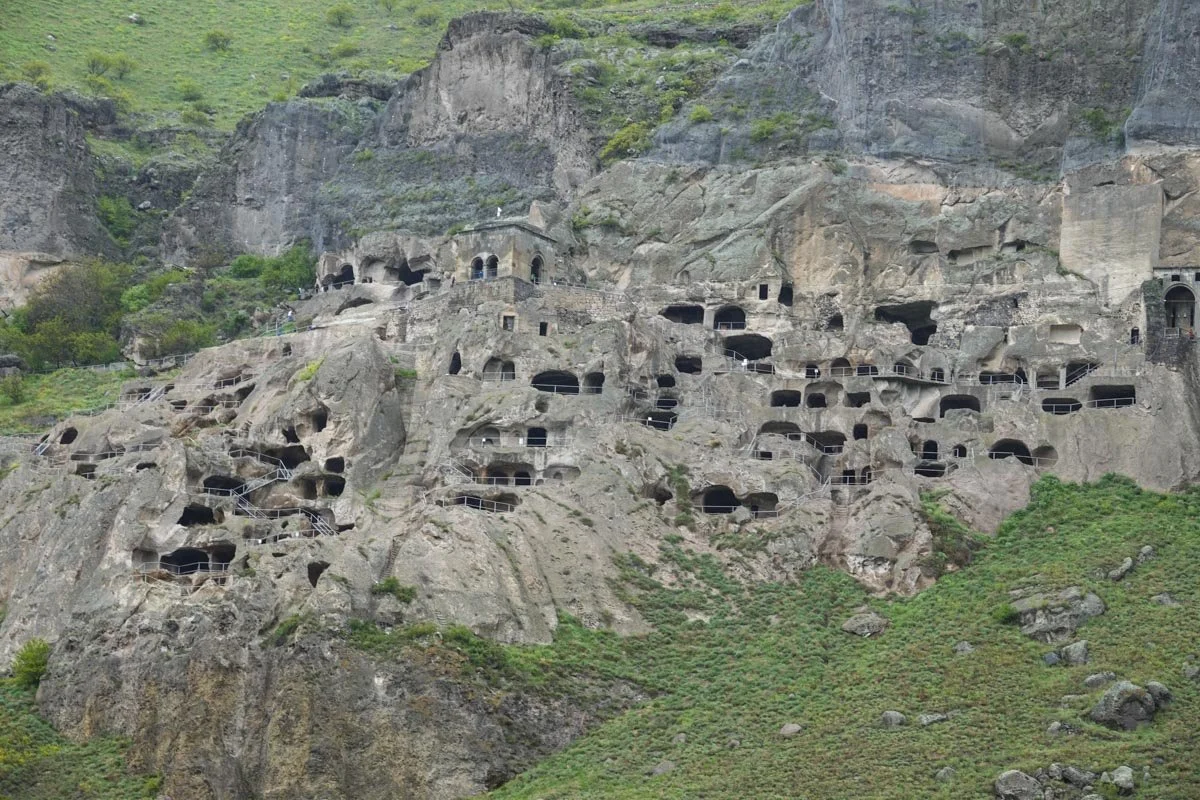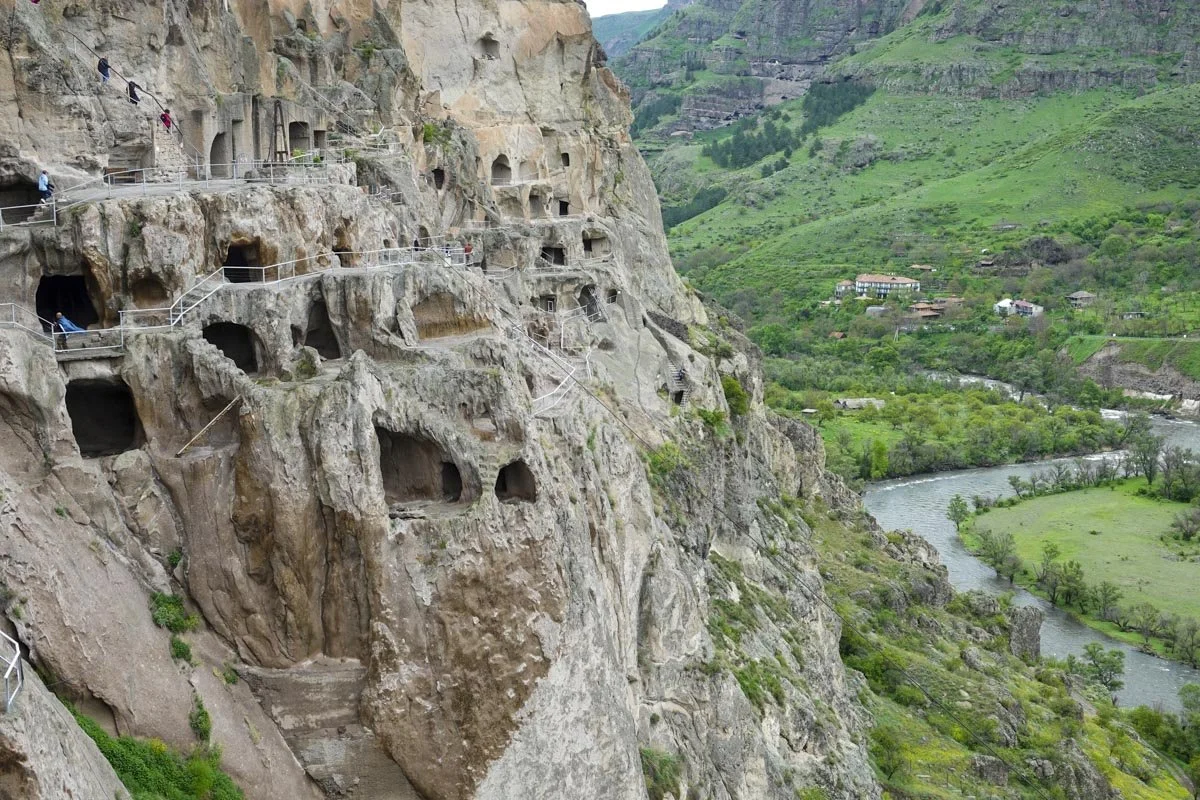Vardzia
We drove south from Borjomi to Vardzia in southern Georgia. Vardzia is a cave monastery on the left bank of the Kura River that was excavated from the slopes of the Erusheti Mountain. The main construction was in the second half of the 12th century. Soviet-era excavations have shown that Vardzia was inhabited during the Bronze Age. Cave settlements along the Kura River date from at least the 5th century BC.
The caves stretch along the cliff for over one-third of a mile, so we only saw a small portion of them. Our guide said that there were 750 chambers and that the complex was up to nineteen tiers high. Between 1,000 and 2,500 monks lived here at its peak occupation. Today, a handful of monks still live here. The monastery was an important cultural and religious center and a place of significant literary and artistic work.
The construction and part of the fort-like nature of the caves was due to the fear of an invasion by the Mongols. King Giorgi III had these built and we heard a long story about his daughter, Queen Tamara, transforming the caves into a monastery. But while Vardzia might have kept the Mongols out, it was no match for Mother Nature. An earthquake in 1283 destroyed over two-thirds of the cave city.
I'll start with some photos from across the Kura River where I'll zoom in farther with each photo to show what it was like. And again, this is just a small portion of the caves. Now that it's a tourist destination, they've added railings and ladders.
We hiked around for about an hour but barely scratched the surface in terms of seeing the whole complex. We did get our exercise in for the day.
From this level, it was quite a view looking out, and clearly a long ways down.
Most of the rooms were not all that interesting to visit. Below is part of the Rectory, probably the second most interesting place to visit here.






